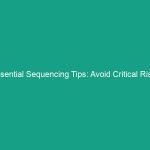Introduction
In the world of agriculture, maintaining health, safety, and environmental Standards is paramount. Pesticides play a crucial role in protecting crops from pests and diseases, but their use comes with inherent risks. Understanding pesticide Safety in agricultural settings is essential for farmers, agricultural workers, and anyone involved in crop production. This article aims to provide comprehensive insights into the Best Practices, regulatory frameworks, and practical tips for ensuring Safety when handling pesticides in agricultural environments.
Health, Safety, and Environment (HSE) focuses on ensuring safety in the workplace through Regulations and Best Practices. By prioritizing HSE, agricultural workers can minimize health risks associated with pesticide exposure, thus fostering a safer work environment. In this guide, we will explore the critical aspects of pesticide safety, empowering readers to implement effective strategies for safer agricultural practices.
Understanding Pesticide Regulations
Before diving into practical safety tips, it’s crucial to understand the regulatory frameworks governing pesticide use. Various organizations, including the Environmental Protection Agency (EPA) in the United States and similar bodies worldwide, establish rules and guidelines to ensure safe pesticide application.
Key Regulations to Consider
- Federal Insecticide, Fungicide, and Rodenticide Act (FIFRA): This U.S. law regulates the registration, distribution, and use of pesticides. Under FIFRA, all pesticides must be registered and labeled correctly before they can be sold or used.
- Worker Protection Standard (WPS): This regulation is designed to protect agricultural workers from pesticide exposure. It mandates Training, access to safety information, and protective equipment.
- State Regulations: In addition to federal laws, many states have their own regulations concerning pesticide use, which can include stricter guidelines and additional training requirements.
Understanding these regulations helps agricultural workers comply with legal requirements and prioritize safety. It’s essential for farmers to stay informed about changes in these regulations to ensure ongoing compliance and worker safety.
Best Practices for Pesticide Safety
Implementing best practices for pesticide safety is vital for minimizing risks associated with pesticide exposure. Here are some key practices that should be adopted in agricultural settings to enhance safety.
Proper Training and Education
One of the most effective ways to ensure pesticide safety in agricultural settings is through comprehensive training. All workers should receive education on the safe handling, application, and disposal of pesticides. Training should include:
- Understanding pesticide labels and safety data sheets (SDS).
- Recognizing the symptoms of pesticide exposure.
- Learning about Personal Protective Equipment (PPE) requirements.
Regular refresher courses can help reinforce these concepts and keep safety at the forefront of agricultural practices.
Personal Protective Equipment (PPE)
Wearing appropriate PPE is a cornerstone of pesticide safety. PPE can significantly reduce the risk of exposure to harmful chemicals. Essential PPE includes:
- Gloves: Protect hands from chemical contact.
- Respirators: Prevent inhalation of harmful vapors.
- Goggles: Shield eyes from splashes.
- Coveralls: Prevent skin contact.
It’s crucial that workers are trained on how to properly wear and maintain their PPE to ensure maximum effectiveness.
Safe Application Techniques
Safe application techniques are vital for reducing pesticide drift and ensuring that chemicals affect only the intended areas. Some best practices include:
- Timing: Apply pesticides during calm weather to prevent drift caused by wind.
- Equipment Calibration: Ensure that spraying equipment is correctly calibrated to apply the correct amount of pesticide.
- Buffer Zones: Establish buffer zones around sensitive areas such as water sources and residential areas to minimize contamination.
By adopting these practices, agricultural operators can significantly enhance safety for themselves and the surrounding environment.
Emergency Preparedness
Being prepared for emergencies is an essential aspect of pesticide safety. Every agricultural Operation should have an emergency response plan that includes:
- Emergency Contacts: Maintain a list of contacts, including local poison control and emergency medical services.
- Spill Response Procedures: Train workers on how to handle accidental spills and leaks safely.
- First Aid Training: Ensure that employees are trained in first aid practices, especially for pesticide exposure scenarios.
Regular drills and reviews of the emergency plan can help prepare workers for real-life situations, making the workplace safer.
Challenges in Pesticide Safety
While significant strides have been made in enhancing pesticide safety in agricultural settings, several challenges persist. Addressing these challenges requires ongoing effort and innovation.
Compliance with Regulations
Maintaining compliance with ever-evolving regulations can be daunting for farmers and agricultural workers. This challenge is compounded by the need for continual education and training to keep up with regulatory changes. To tackle this issue, organizations can:
- Stay updated on changes in legislation through professional organizations.
- Utilize resources provided by governmental agencies for training and compliance assistance.
By staying informed, agricultural operators can mitigate compliance-related issues and enhance safety.
Worker Awareness and Attitudes
Another challenge is the varying levels of awareness and attitudes toward pesticide safety among workers. Some may underestimate the risks associated with pesticide exposure, leading to unsafe practices. To foster a culture of safety:
- Encourage open discussions about safety concerns and experiences.
- Recognize and reward Safe Practices among employees.
Creating an environment where safety is prioritized can lead to improved adherence to safety protocols.
Case Studies: Successful Implementation of Pesticide Safety
Examining real-world examples of successful pesticide safety initiatives can provide valuable insights for agricultural operators. Here are two noteworthy case studies that highlight effective practices.
Case Study 1: Sustainable Farming Practices
A family-owned farm in California implemented integrated pest management (IPM) strategies, drastically reducing their reliance on chemical pesticides. By utilizing beneficial insects and crop rotation, they minimized pest populations without resorting to harmful chemicals. This shift not only improved their safety but also enhanced their crop yield and quality. The farm’s commitment to worker training and PPE usage ensured a safer work environment.
Case Study 2: Community Education Programs
A cooperative in Iowa launched a community education program focusing on pesticide safety, targeting local farmers and agricultural workers. The program provided hands-on training and resources to improve understanding of pesticide labels and application techniques. As a result, participants reported a significant increase in compliance with safety practices and a decrease in pesticide-related incidents in the community. This initiative showcased the importance of education in enhancing safety.
Future Trends in Pesticide Safety
The landscape of pesticide safety is continuously evolving, driven by technological advancements and changing regulations. Here are some emerging trends that could shape the future of pesticide safety in agricultural settings.
Precision Agriculture
Precision agriculture technologies, such as drones and remote sensing, are revolutionizing the way pesticides are applied. These technologies allow for precise targeting of pest-infested areas, reducing the overall amount of pesticide used and minimizing environmental impact. By adopting precision agriculture, farmers can enhance safety while maintaining productivity.
Biopesticides and Organic Alternatives
As consumer demand for organic produce grows, the use of biopesticides and organic alternatives is on the rise. These products often pose fewer risks to human health and the environment compared to traditional synthetic pesticides. Continued research and development in this area could lead to safer pest management solutions, improving overall pesticide safety in agricultural settings.
Conclusion
Ensuring pesticide safety in agricultural settings is crucial for protecting the health of agricultural workers and the environment. By understanding regulatory frameworks, implementing best practices, and staying informed about emerging trends, farmers and workers can create a safer agricultural landscape. It is essential to prioritize training, proper equipment use, and emergency preparedness to minimize risks associated with pesticide exposure.
As we look to the future, continued innovation and education will play a vital role in enhancing pesticide safety. We encourage all agricultural stakeholders to commit to ongoing learning and safety practices to ensure a healthier, safer agricultural environment for all. Together, we can cultivate a safer future in agriculture.


